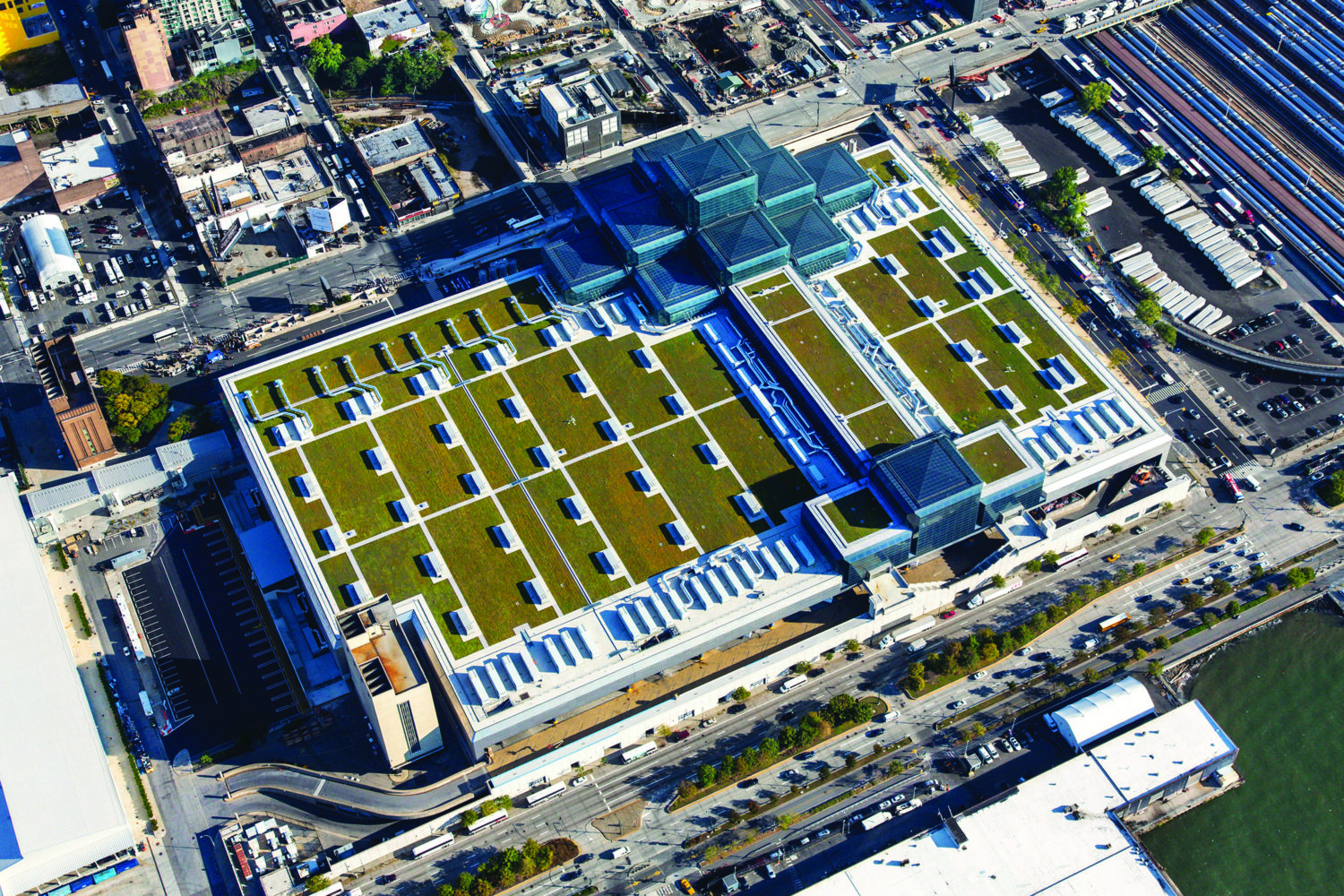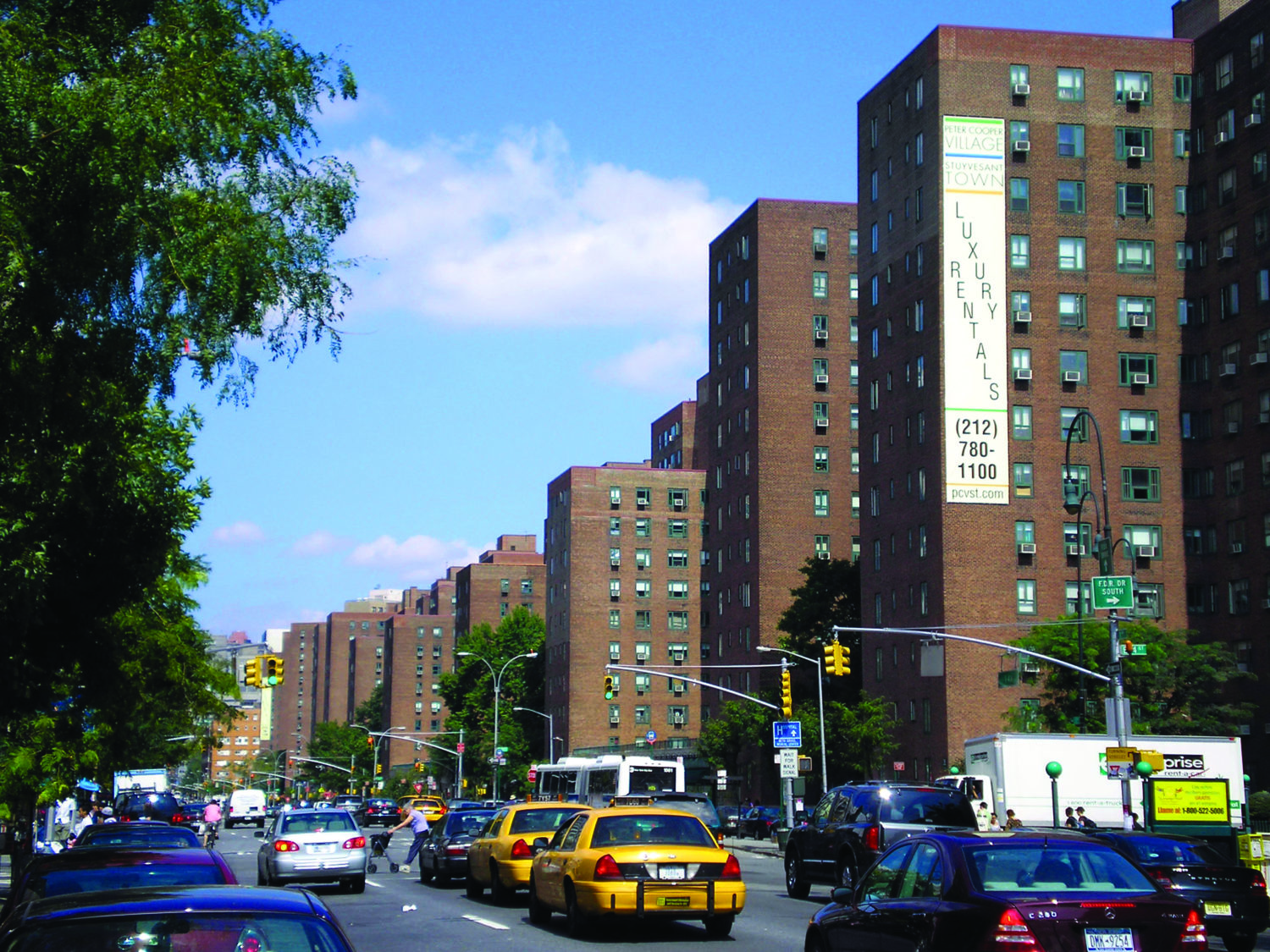By Christian Bergland, Projects Associate, BE-Ex
—
Passed in April 2019, the Climate Mobilization Act (CMA) is a near-term concern for building decision makers. The legislative package’s sustainable roof requirements will take effect in mid-November, while its first emissions limit compliance period begins in 2024. As this reality sets in, building decision makers are evaluating their obligations with a sense of urgency.
Exemptions under the CMA are quite narrow, and the expectation should be that buildings will be required to comply with its various laws, but that is not to say that there no exceptions to its various policies. Below we provide a detailed reference on the law’s alternative compliance pathways and exemptions, allowing building decision makers to identify their buildings’ obligations under the CMA.
Local Laws 92 & 94 – Sustainable Roofs Requirement
Local Laws 92 & 94 require that buildings undergoing major roof work cover their entire rooftops in either solar photovoltaic panels or green roof systems (read more here). With these laws set to take effect in just over a month, there is an immediate need for decision makers to determine buildings’ obligations under the law.
The sustainable roof mandate will apply to any new building or major construction projects requiring replacement of the entire roof assembly or decking. Examples include brand new construction, vertical or horizontal building extensions, and replacement of the entire roof deck. Standard roof membrane replacements will not require installation of solar photovoltaic panels or green roof systems.

While the CMA’s sustainable roof policies do not preference solar systems or green roofs, buildings with site conditions rendering solar and green roof systems non-viable are eligible for exemptions. If, for example, a solar professional determines that a roof has poor solar potential due to shading or other factors, this “unfavorable site condition” would exempt the building owner from installing solar. In this case, building decision makers would need to explore adding a green roof system. In a parallel scenario, if a roof was determined to be nonviable for a green roof system, building decision makers would need to consider solar panels. If determined that neither of these systems are options for a given building, the building would be exempt.
Rooftop recreation areas are another area of concern for decision makers, but this concern is not warranted. Local Laws 92 and 94 allow schools to install rooftop playgrounds, residential buildings to build roof decks, and hotels to add rooftop bars. Though rooftop areas outside of the recreation space will need to comply with sustainable roofing requirements, the sustainable roof requirement will not prevent New Yorkers from enjoying their rooftop cocktails.
Some affordable housing is accorded an alternative compliance pathway under the law through November 2024, allowing the City to study the sustainable roof requirement’s impact on affordability. While specifics remain to be determined, responsibility for determining this pathway falls on the Department of Housing Preservation and Development (HPD). Exemptions will mostly apply to buildings with City or State subsidies, including:
- HPD and New York State Division of Housing and Community Renewal (DHCR) loans
- Housing Development Fund Corporation (HDFC) cooperatives
- Mitchell-Lama developments
- 420-c tax incentive recipients
Alternative compliance-eligible buildings will still need to comply with the New York City Overlay of the Enterprise Green Communities Criteria, which in certain cases may require solar installation. It is important to note that not all affordable housing is exempt. 421-a or J-51 incentive recipients, for example, are required to fully comply with sustainable roofing requirements.
Local Law 94 also updated “cool roof” requirements, making emittance and reflectance requirements more stringent for flat roofs and, for the first time, requiring cool roofs for pitched roofs and roof areas under solar panels. There are no affordability exemptions for this expanded cool roof mandate.
Local Law 95 – Building Energy Grades
Another component of the CMA is Local Law 95, an amendment to Local Law 33. These laws require that covered buildings publicly display energy scores, in the same fashion as restaurant health scores. Scores will be based on energy benchmarking data from Local Law 84 – also known as the NYC Benchmarking Law – and coverage will mirror that of Local Law 84.
Starting in 2020, buildings 25,000 square feet or larger – those subject to Local Law 84 – that are eligible to generate an ENERGY STAR score must display energy grades. Issued by ENERGY STAR’s Portfolio Manager platform, scores will represent building energy performance relative to similar buildings in similar climates. Those buildings not eligible for ENERGY STAR score generation are exempt, and do not need to post energy grades (more on ENERGY STAR eligibility here and here). All ENERGY STAR-eligible buildings covered by Local Law 84 must present energy performance grades, regardless of affordability status.
Local Law 97 – Building Emissions Limits
The CMA’s central component, Local Law 97, does not take effect until 2024, but decisions made today will have a dramatic impact on buildings’ ability to comply with the law. Given the law’s long-term capital planning required to comply with the law, building decision makers need to know now whether or not it covers their buildings, and what, if any, alternative compliance pathways are available to them.

Alternative Compliance Pathway for Certain Buildings
Local Law 97 includes a number of alternative compliance pathways, most prominent of which is the law’s alternative energy conservation measure requirements for certain buildings. These alternative requirements cover buildings:
- Developed with subsidies received pursuant to Section 1701q of Title 12 of the United States code (supportive housing for the elderly).
- Owned by any religious corporation located in the City of New York and dedicated and used exclusively as a place of public worship.
- In which more than 35% of dwelling units are required by law or by an agreement with a governmental entity to be regulated in accordance with the emergency tenant protection act of 1974, the rent stabilization law of 1969, or the local emergency housing rent control act of 1962 (updated November, 2020).
Buildings cannot enter units into rent stabilization in order to access the alternative compliance pathway.
Buildings that are eligible for alternative compliance have two options. Those with emissions below prescribed limits for the second Local Law 97 compliance period from 2030-2034 are treated as normal buildings and are not required to conduct any additional energy efficiency improvements. Those buildings with emissions higher than prescribed limits, however, must ensure that certain energy conservation measures have been conducted where applicable. These measures include:
- Adjusting temperature set points for heat and hot water to reflect appropriate space occupancy and facility requirements.
- Repairing all heating system leaks.
- Maintaining the heating system, including but not limited to ensuring that system component parts are clean and in good operating condition.
- Installing individual temperature controls or insulated radiator enclosures with temperature controls on all radiators.
- Insulating all pipes for heating and/or hot water.
- Insulating the steam system condensate tank or water tank.
- Installing indoor and outdoor heating system sensors and boiler controls to allow for proper set-points.
- Replacing or repairing all steam traps such that all are in working order.
- Installing or upgrading steam system master venting at the ends of mains, large horizontal pipes, and tops of risers, vertical pipes branching off a main.
- Upgrading lighting to comply with the standards for new systems set forth in Section 805 of the New York City Energy Conservation Code and/or applicable standards referenced in such energy code on or prior to December 31, 2024 (this provision is subject to Exception 1 in Section 28-310.3, provided that July 1, 2010 is replaced by January 1, 2020 for the purposes of this section).
- Weatherizing and air sealing where appropriate, including windows and ductwork, with focus on whole-building insulation.
- Installing timers on exhaust fans.
- Installing radiant barriers behind all radiators.
If opting for the alternative compliance pathway, building owners are required to submit a report prepared by a retro-commissioning agent demonstrating that they have implemented the appropriate energy conservation measures outlined above.
Other Alternative Compliance Pathways
Buildings not eligible for the alternative compliance pathway detailed above – meaning those that are not houses of worship, developed as senior housing using specific federal subsidies, or home to rent stabilized dwelling units – do have compliance pathways. Though these pathways can provide decision makers with flexibility and help them avoid fines, they are both limited and complex, and should be used to supplement emissions reduction measures.
One option is for buildings to purchase greenhouse gas offsets, also known as carbon offsets, to deduct up to 10% of a given building’s emissions. Offsets represent greenhouse gas reductions, generally denominated in tons of carbon dioxide equivalent. There are a number of ways in which offsets are created, including forest preservation and planting, energy efficiency improvements, and methane collection and combustion. Specific rules as to what constitute accepted offsets under Local Law 97 are yet to be determined and local markets of offsets focused on buildings have yet to develop. As such, building decision makers should be wary about depending on offsets to help them meet their prescribed emissions limits.
Local Law 97 also requires that the City conduct a study to determine feasibility of a citywide trading scheme for greenhouse gases, to be completed no later than January 2021. If adopted, greenhouse gas emissions trading could be another alternative compliance option for New York City’s buildings, potentially allowing high-performing buildings to generate emissions credits which could then be sold as deductions for buildings with emissions in excess of their prescribed limit. Whether an emissions trading program will ultimately be implemented is an open question, however, and exactly what such a program might look like remains to be seen. Accordingly, building owners should not count on the program as a guaranteed pathway in the near-term.
Reducing Emissions is Still the Best Option
Exemptions and alternative compliance pathways exist to help in scenarios where there are extenuating circumstances making energy efficiency improvements a significant challenge. Nonetheless, the fight against climate change requires an all-hands-on-deck approach in reducing emissions, and many energy efficiency improvements offer major energy savings while improving interior comfort. The best option for both building decision makers and the City at large is for buildings to conduct energy efficiency improvements to limit their emissions, reduce operating costs, and improve tenant wellbeing.
—
Have more questions? Visit our Climate Mobilization Act Series portal.
10/28/19 Update: Read NYC Department of Buildings’ Technical Bulletin 2019-10, clarifying obligations for building owners under Local Laws 92 and 94 of 2019.
11/20/20 Update: Read LL116 of 2020, amending the definition of “rent regulated accommodation” to include only buildings in which 35% or more of the dwelling units are rent regulated.